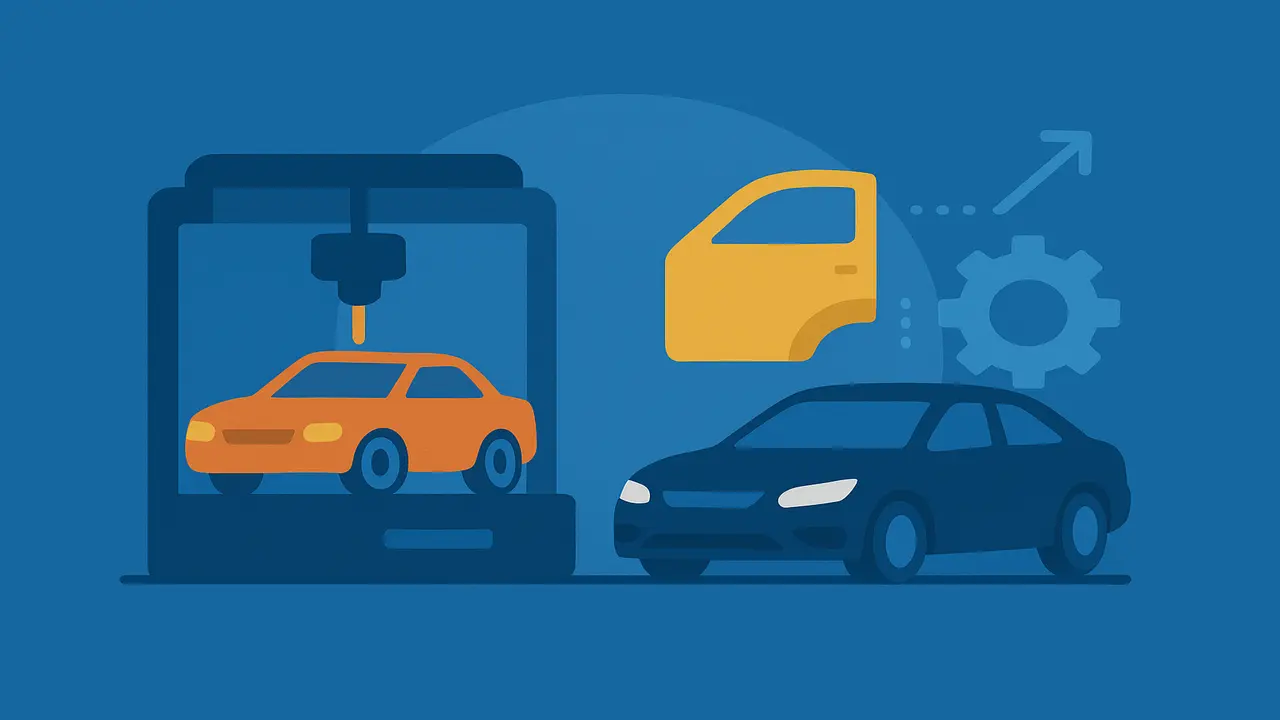Over the past few decades, the automobile industry has seen significant technological improvements, and additive manufacturing, or 3D printing, is one of the most revolutionary developments. The design, prototyping, and even manufacturing of automobiles are being transformed by this technology. 3D printing is promoting efficiency and innovation in the auto industry through quicker product development, lighter vehicle components, and customized production.
Quicker Product Development and Prototyping
The potential of 3D printing to speed up prototyping is one of its most important effects on the auto industry. Prototyping has historically involved costly and time-consuming procedures, particularly when dealing with metal or customized components. Instead of weeks, engineers may use 3D printing to produce sophisticated component prototypes in a matter of hours or days.
Automobile manufacturers can test and improve designs more quickly through rapid prototyping, which reduces development times and speeds up vehicle launches. Businesses like Ford, Volkswagen, and BMW are already using this technology to increase the effectiveness of new model introductions and shorten their R&D processes.
Manufacturing Cost Reduction
3D printing has the potential to reduce costs in several automotive production areas. Compared to conventional subtractive techniques like milling or machining, the procedure reduces waste because it adds material layer by layer. Additionally, it enables manufacturers to build parts as needed rather than keeping huge inventories, a practice known as on-demand manufacturing.
Additionally, this method lowers tooling costs. Making molds and dies for parts is costly and time-consuming in traditional manufacturing. Manufacturers can greatly reduce costs by avoiding much of this procedure with 3D printing, especially for specialty or low-volume parts.
Components That Are Lightweight for Increased Efficiency
The capacity to produce lightweight parts without compromising strength or durability is another significant advantage of 3D printing for the auto industry. Manufacturers can create parts with complex shapes that are both robust and lightweight by utilizing cutting-edge materials like high-strength thermoplastics or carbon fiber composites.
In electric vehicles (EVs), where a lighter vehicle means a longer battery life, lowering the weight of the vehicle is an essential strategy for increasing fuel economy and lowering pollution. Automakers may create optimum parts with 3D printing, which improves the vehicle’s overall performance and efficiency.
Flexibility and Customization in Design
Unprecedented flexibility in vehicle customization and design is made possible by 3D printing. Customers are demanding more individualized features, particularly in the high-end and luxury markets. Automakers may customize interior features, including dashboard layouts, seat designs, and trim pieces to suit the preferences of specific customers by using additive manufacturing.
Additionally, the capacity to produce one-off or low-volume parts is significant for limited editions and concept cars. It is relatively easy and inexpensive to print custom components that would be prohibitively expensive to build using existing methods.
Simplifying Supply Chains
Global, intricate supply chains are crucial to the auto industry. Because 3D printing makes local and on-site production possible, it has the potential to simplify these supply chains. This reduces dependence on foreign suppliers, cuts down on shipping expenses, and can lessen the possibility of disruptions like the COVID-19 epidemic.
Parts can be printed close to the assembly line or even at service centers when digital files take the place of physical inventory, which speeds up response times and minimizes customer downtime.
Challenges and the Road Ahead
Even with all of its benefits, 3D printing still has problems in the automobile industry. High equipment expenses, comparatively slow production speeds for mass manufacturing, and material constraints are some of these. Safety and regulatory requirements must also change to fully accept 3D-printed parts.
However, these challenges are being increasingly removed as technology advances. 3D printing is expected to become more and more important in the design and production of automobiles in the future, with sustained investment and innovation.
By increasing design freedom, cutting costs, and speeding up development, 3D printing is completely changing the industry of automobiles. Its influence may already be seen in customization, part manufacturing, and prototyping. The role of technology will grow as it develops, possibly revolutionizing the production and delivery of automobiles in the ensuing decades.
